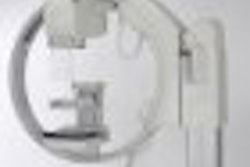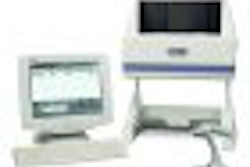Dose reduction for augmented breasts is achievable using faster film-screen combinations and other technical adjustments, according to a paper in the May issue of the American Journal of Roentgenology. Instead of a standard four-view mammogram, the authors suggested that three views would suffice.
"The increased number of (four) views has been recommended for decreasing the possibility that a breast lesion may be obscured by the implant," wrote Dr. Ralph Smathers and colleagues, but this results in a higher mean glandular dose to breast tissue. "Judicious selection of target-filter combinations can be important in breast dose reduction" (AJR, May 2007, Vol. 188:5, pp. 1414-1421).
Smathers is from Mammography Specialists Medical Group in Los Gatos, CA. His co-authors are from other California-based institutions in Sacramento, San Jose, and Napa, as well as from Chicago.
For this research, they enrolled 206 women with cosmetic breast implants. They also imaged 13 women before and after augmentation. The patients underwent screening mammography on an outpatient basis. The majority of implants (55%) were saline. Imaging was done with the implant displaced (ID) and without displacement (implant-full or IF). Four views were taken per breast for eight views altogether.
According to the results, the mean glandular dose per breast for conventional two-view nonimplant mammography was 3.4 mGy for 100-speed molybdenum-molybdenum (Mo-Mo) images and 2.6 mGy for 190-speed Mo-Mo images.
For 100-speed Mo-Mo images, the average total mean glandular dose was 10.7 mGy for a four-view implant mammogram and 10.9 mGy when one extra view was obtained for technical reasons, the authors stated.
For IF views, the average compressed breast thickness was 7.7 cm versus 3.6 cm for ID views. The average effective tube current was 236 mAs for IF views and 80.2 mAs for ID views when the 100 Mo-Mo target-filter combination was used. The peak voltage averaged 24.9 kVp for nonimplant views, 25.5 kVp for ID views, and 27.7 for IF views.
Among the 13 women who underwent imaging before and after augmentation, a two-view nonimplant mammogram had a total mean glandular dose of 3.4 mGy. In comparison, the four-view postimplant mammogram had a total mean glandular dose of 10.7 mGy.
The authors found that by using a 190-speed rhodium-rhodium (Rh-Rh) target-filter combination they could obtain a three-view mammogram in the augmented breast for a mean glandular dose of 3.6 mGy.
"The Mo-Mo target-filter combination should be avoided for implant-full views because of relatively high doses involved," they concluded. "We found clinically that both the 190-speed system used in the study ... provide(s) acceptable image quality.... This reduction is accomplished by obtaining both implant-displaced views but only one implant-full view."
For that implant-full view, they recommend using a higher peak kilovoltage and the Rh-Rh target filter. Also, the mean glandular dose should be kept to 7.0 mGy per breast in women with implants. Finally, they also emphasized that the 27% to 32% reduction in lifetime attributable risk of radiation-induced breast cancer with a three-view mammogram outweighed the risk of missing lesions.
By Shalmali Pal
AuntMinnie.com staff writer
May 8, 2007
Related Reading
Silicone injections remain popular and dangerous despite FDA ban, December 1, 2006
Breast implants require deft maneuvering for maximum mammo quality, October 11, 2006
Reports to FDA allege damage to breast implants during screening, June 15, 2004
Implants may interfere with mammograms but tumors found at similar stages, January 28, 2004
Copyright © 2007 AuntMinnie.com



















